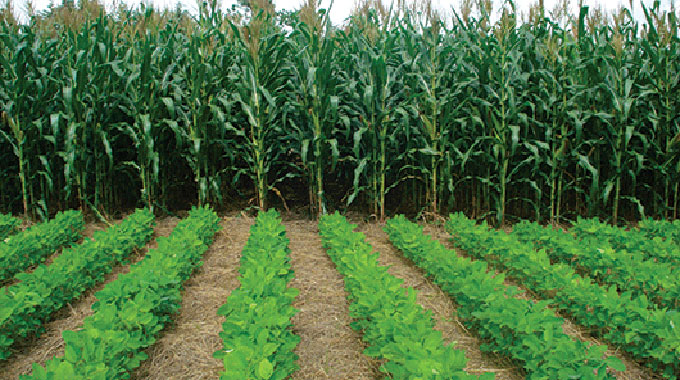EDITORIAL COMMENT: Climate-proofing farming must be accelerated

The forecast that the southern and central areas of SADC will be receiving normal to above normal rainfall in both the first three months of the rainy season and then in the second, and more critical, three months is good news.
But it needs to be tempered by the experience of the last season, where normal volumes of rain did largely fall as predicted, but the distribution was highly abnormal and very erratic.
Generally the season started late, followed by heavier than normal rainfall with the less careful farmers having to deal with water-logging and leaching, and then that appalling long dry spell, and then rain continuing to fall right into late May.
This shows the limitations of the long-range forecasts. They are becoming ever better every year at telling us how much moisture will flow into the region, and whether the El Nino Southern Oscillation, a major driver of global weather, will benefit or hinder us.
And this is important and useful knowledge, and something those who contract farmers, from the Government down, and the farmers themselves need to accept as they “follow the science”.
But what it cannot do is tell us much about the distribution and certainly cannot tell us how much rain will fall in the third week of January. In fact that sort of highly-detailed long-range forecast is impossible.
During the season it is difficult enough to forecast reasonably accurately even a week in advance, and even that was something unheard of a few decades ago.
This means that farmers need to be optimistic, but cautiously so. They need to be able to conserve water, store water and harvest water as the rain falls and be prepared to cope with dry spells, although hopefully the sort of long dry spell in the middle of the de facto season early this year will not be repeated.
But if something similar occurs, then we assume a lot was learned last season over what worked and what did not, and whose crops were destroyed and whose crops were just stressed. Farmers need to be told what worked to bring a reasonable percentage of the crop through to harvest and then be helped to apply those lessons.
The experiences of last season also mean that the Government is on the right path in building new major dams, a programme that was dying until the Second Republic sorted out its own finances and then started applying a serious capital budget, with dams high on the list. There are now several major dams under construction, some just starting, some well into construction and some coming to the end of the construction phases.
Growing summer grain under the sort of full irrigation we use for wheat is likely to prove incredibly expensive. But fortunately summer crops do not need full irrigation. But they can benefit from supplementary irrigation, to get an early start to the planting and to bring the crop through with negligible losses through dry spells.
This might just mean 10 percent or 20 percent of the water a crop needs comes from a pipe or a canal, with the rest being rain, but that modest percentage will be coming when it is desperately needed to maintain a high yield. But it also means that some irrigation schemes can be a lot bigger than a basic calculation on how much land can be irrigated 24/7.
We might in fact need irrigation schemes to be able to cater for both types of farmer, those who do require almost continuous irrigation, such as winter wheat farmers and many horticulture farmers, and those who need modest amounts of water at critical summer periods, such as tobacco growers, summer grain farmers and some cotton farmers.
Generally speaking livestock farmers are less ambushed by erratic rainfall. If their grass or some of their ever larger harvests of stockfeed crops grow fast at some stages and slower at other stages their cows and other livestock still get their food.
These farmers are keen to know the general long-range forecasts of each half of the season, but at less at the mercy of elements if distribution is erratic. It is fairly obvious that climate change will be changing our seasons, with the ever later start to the rains being one change predicted some time ago, for example.
It has also been suggested that we could be getting more erratic rainfall, periods of heavy rain and periods of almost zero rain during a season, rather than the long run of days of light rainfall with some sunny spells that farmers love and many of us remember from our childhood.
This sort of growing extremes is likely to see more cyclones, since these are driven by a heating ocean.
Again long range forecasting is impossible, although we can estimate, say, that up to five tropical depressions could develop into cyclones or intense tropical storms that affect eastern Zimbabwe. But we cannot know when they might hit, and certainly not where they might hit. We find it hard enough when the cyclone is approaching the Mozambique coast to be able to predict its future path with high levels of accuracy.
The SADC forecasters also raised the possibility of floods in flood-prone areas, although they cannot tell which week will the dangerous week this far in advance.
But it is clear that the disaster preparedness needs to be maintained so we can cope with cyclone, flood or even drought. Since the high level of severity seen with Cyclone Idai, Zimbabwe has been upgrading its standard procedures to ensure that the next cyclone will be a serious nuisance, not a killer.
We now know what can happen so if it happens again we are prepared, and if the severity of the next bunch of cyclones is less we can cope with ease.
This learning from experience is important. Pfumvudza has only been operating fully for two seasons, although there was a pilot project involving less than 10 000 farmers to prove it in 2019-20 season.
We now know a lot more about what sort of packs are needed in each natural region and, even more important, we know how the best farmers brought their crops through the bad patch last season, with better water harvesting and better mulching, and even with their holes dug on contours how they coped with potential flooding before the dry spell.
This growing experience and growing refinement is moving right down the line to each individual farming family. And it must continue to do so as we move ever more into climate-proofing our agriculture by accelerating irrigation provision.
Now the long range forecasts become ever more practical. If we know there is going to be a season at least close to normal we know the dams are going to fill, so there is water. We can even design some large dams in the east of the country to fill every few years from cyclone run off; we might not know when a cyclone will hit, but we do know that over five years, or even 10 years, a particular dam will be suddenly filled.
Even small dams, what used to be called farm-dams, can be important for supplementary irrigation and these can be built on small streams quickly and cheaply, and so should not be neglected.









Comments